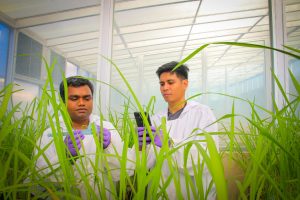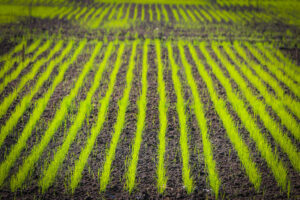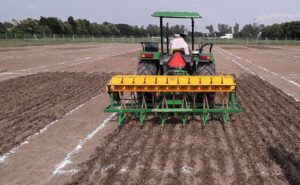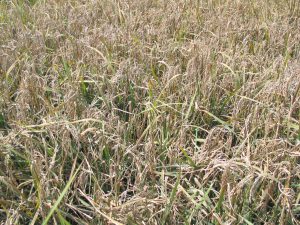

Latin America is vastly diverse in its ecosystems for rice production. From the small farmers in coastal Ecuador or Guyana who continue to transplant or pre-germinate seeds to the extensive rice growers in the Southern Cone (Argentina, southern Brazil, and Uruguay) who use high-tech no-till direct-seeding systems; from the hilly upland subsistence farmers in the Andean region of Bolivia or northern Nicaragua to commercial producers in the rainfed Eastern Plains of Colombia or Costa Rica, there are all kinds of intermediate ecosystems and forms of production.
International research has played a key role in improving rice production in the last 40 years, starting with the semidwarf materials developed during the Green Revolution in the late 1960s. Joint efforts of the International Rice Research Institute and the International Center for Tropical Agriculture (CIAT) were the driving force behind this revolutionary trend in agriculture. During the 1980s, strong national institutions appeared in several countries and helped create a regional network for research and development in rice. This concerted effort was consolidated in 1995 with the foundation of the Latin American Fund for Irrigated Rice (FLAR) as a public-private regional partnership based at CIAT. With FLAR’s support and the active involvement of farmers´ organizations, Latin America is working on a second Green Revolution in the region based on crop management and good agronomic practices (see Rice Revolutions in Latin America). International, regional, and local efforts have led to a continuous and dynamic improvement in rice production in Latin America—with the region demonstrating high yield growth in the last three decades.
Since the late 1990s, however, collaboration among international centers and other institutions from different regions has declined steadily. IRRI’s support for Latin America diminished and contact with the African centers became minimal. But, in 2009, changes in the international centers’ governance sparked a revival of communication among centers. Institutes then started discussing and elaborating the program that has now come to be known as the Global Rice Science Partnership(GRiSP). (See Blueprint for a greener revolution.)
This program provides an opportune time to re-engage Latin America as an active partner in the strategy to overcome the huge challenges facing world rice production—allowing the region to not only receive new scientific breakthroughs but also to share some of the interesting technology and production systems that Latin American farmers have already validated and adopted.
Investment in rice research in Latin America is very small compared with that in Asia and Africa. Hence, we anticipate that this partnership will bring in new and suitable technologies to the region. In turn, because urbanization across the world has limited agricultural expansion, Latin America could provide additional rice area to boost rice production since it is one of the few regions left in the world that still has plenty of natural resources, especially land and water.
Research programs at CIAT, FLAR, and several national institutes have accomplished good technological advances that could also be shared in this new global agenda. Strategies to increase yield potential in conventional varieties, using wild species to develop new improved cultivars, biotechnology breeding tools, rice transformation with a high-throughput platform, agronomy extension programs aimed at closing the yield gap, improving water-use efficiency, minimum- or no-till and direct-seeding systems, institutional innovations such as
Plugging Latin America into this global rice research agenda, coordinated by IRRI, will help the region improve rice production and meet its own local demand, as well as the world’s. It will also provide Asia and Africa with valid experiences and research products, which they can adopt and apply to their respective strategies. FLAR, among others, are areas that have good and validated technological products that may be useful on other continents. FLAR, along with its more than 30 public- and private-associated institutions in 17 Latin American countries, is ready and eager to play an active role in this new global platform. While CIAT will be fully engaged in genetics, biotechnology, disease, and climate change research issues among others, FLAR, with its grass-roots network of local institutions, will focus on applied research and act as a bridge in bringing these new technologies to farmers.
_________________________________________
Mr. Zorrilla is the executive director of FLAR.










